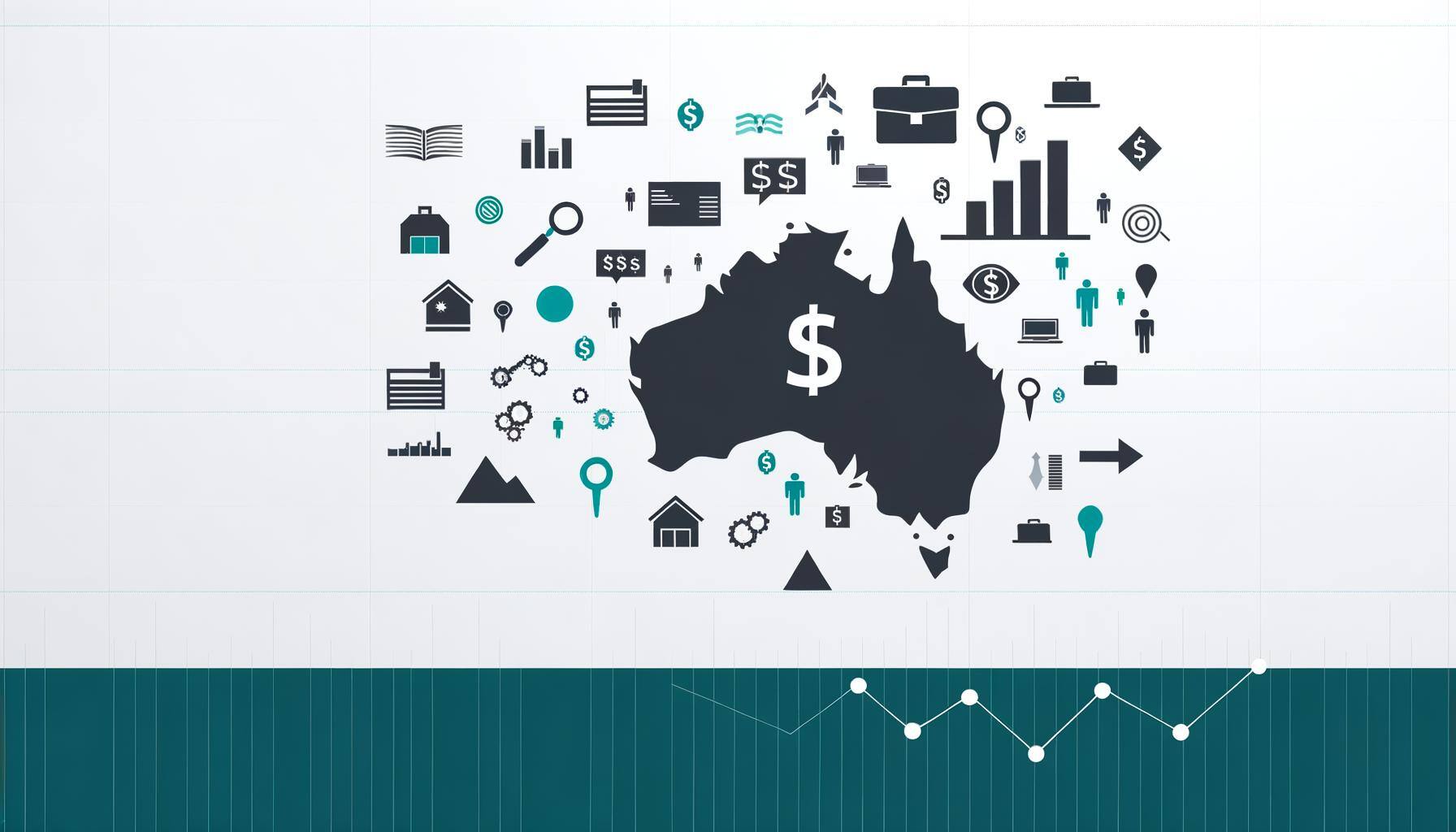Top ASX CEOs Rake in $161.4 Million as Pay Gap Narrows
New data from the Australian Council of Superannuation Investors (ACSI) reveals that the five highest-paid CEOs of ASX 200 companies collectively earned $161.4 million in the 2023 financial year. This eye-watering figure highlights the ongoing debate about executive compensation in Australia.
Top Earners and Key Findings
ResMed's US-based CEO Mick Farrell topped the list with a staggering $47.5 million, followed by News Corp's Robert Thomson at $41.5 million. Locally, Goodman Group's Greg Goodman led the pack with $27.3 million.
Other notable earners included:
- BHP's Mike Henry: $19.6 million (up 19.7%)
- Commonwealth Bank's Matt Comyn: $10.5 million
- Macquarie's Shemara Wikramanayake: $25.3 million (down 10.5%)
Bonuses Under Scrutiny
"That culture of 'everyone wins a prize' is a challenge for investors who want to see companies deliver over the long term," said ACSI executive manager Ed John.
The report highlighted concerns about the prevalence of bonuses, with only two ASX 100 CEOs missing out on extra payments averaging $2.4 million. This led to a record 41 strikes against remuneration reports across ASX 300 companies.
Narrowing Pay Gap
Despite the enormous figures, the gap between CEO earnings and average Australian wages narrowed slightly. ASX 100 CEO realised pay was 50 times the average adult earnings, down from 55 times the previous year.
As super funds continue to push for long-term performance, the debate over executive compensation in Australia is likely to remain a hot topic for investors and the public alike.
BHP to Mothball Nickel West Operations, Impacting 3000 Jobs
In a significant move, BHP has announced plans to suspend its Nickel West operations in Western Australia, affecting approximately 3000 jobs. The mining giant will begin shutting down its mines and processing facilities from October, with the suspension expected to last until at least February 2027.
Key Points:
- Closure includes Kalgoorlie smelter, Perth refinery, and major mines at Leinster and Mount Keith
- 1600 operational staff offered redeployment within BHP
- 800 support staff to be assisted in finding new roles
- $450 million annual spend to maintain mothballed operations
BHP President Australia, Geraldine Slattery, cited global oversupply and economic challenges as reasons for the decision. The division is expected to book a $450 million loss for the financial year.
"Like others in the Australian nickel sector, we have not been able to overcome the substantial economic challenges driven by a global oversupply of nickel," Slattery stated.
The move represents a significant blow to regional WA, particularly Kalgoorlie, where BHP's smelter is a major employer. It follows Alcoa's recent decision to close its Kwinana alumina refinery, further impacting WA's heavy industry sector.
Despite the current challenges, BHP remains optimistic about nickel's long-term prospects, particularly in electric vehicle and battery markets. The company will review its decision in 2027, considering market conditions and potential returns before deciding on resuming operations.
This development underscores the volatility in the resources sector and its impact on regional communities, highlighting the need for diversification in Australia's mining-dependent regions.
ANZ Launches Probe into Bond Trading and Culture Allegations
ANZ Bank is taking serious action to address allegations of government bond price manipulation and cultural issues within its markets division. CEO Shayne Elliott and institutional boss Mark Whelan have initiated a thorough investigation, engaging two prominent law firms to uncover any potential wrongdoing.
Key Developments:
- Herbert Smith Freehills to investigate alleged bond trading activity
- Allens to conduct a deep dive into conduct within the markets division
- ANZ cooperating with regulators, including ASIC and APRA
- $500 million capital overlay remains in place
The allegations stem from concerns raised by the Australian Office of Financial Management (AOFM) regarding ANZ's role in a 2023 issuance of a 10-year treasury bond. ASIC is investigating suspected contraventions of the ASIC Act and Corporations Act.
"Where we find any evidence of wrongdoing, those involved will be held accountable and action will be taken," stated Elliott and Whelan in a staff memo.
This isn't the first time ANZ's markets team has faced scrutiny. In 2017, the bank settled with ASIC over allegations of bank-bill swap rate manipulation. The current investigation also addresses broader cultural issues, including past allegations of inappropriate behaviour within the division.
As the investigation unfolds, ANZ remains under increased regulatory oversight, with APRA maintaining a $500 million capital overlay due to ongoing governance concerns.
Port Fee Regulation: Pressure Mounts on Albanese Government
As of 12 July 2024, the Albanese government faces increasing pressure to regulate port fees, with transport companies warning of potential inflationary impacts. The Australian Competition and Consumer Commission (ACCC) is currently analysing the issue.
Rising Terminal Access Fees Spark Concern
Shipping industry leaders and the NSW Labor government have criticised the sharp increase in terminal access fees charged by Australian stevedores. These fees, levied on truck and train companies for waterfront access, have significantly added to shipping costs for importers and exporters.
"Increasing charges must be justified, not add an unnecessary burden on NSW exporters, the container transport industry and the wider supply chain which only raises costs for consumers across NSW," a NSW government spokesman stated.
Global Shipping Crunch Impacts Australia
The ongoing conflicts in the Red Sea and congestion at Singapore Port have led to months-long delays, forcing retailers to consider price hikes on imported goods. Economists warn this could drive up goods inflation, potentially undermining the government's efforts to curb rising prices.
Call for National Approach
The NSW government is advocating for a national approach to regulating terminal access fees. Meanwhile, the federal Treasury is developing a mandatory code for land-side charges, which would be enforceable by the ACCC.
Prime Minister Anthony Albanese acknowledged the impact of international elements on Australia's inflation, stating, "We need to be more resilient here because we aren't immune from international impacts."
Impact on Consumers and Businesses
The shipping crisis is already affecting various sectors. Luxury car deliveries are experiencing significant delays, with some customers waiting up to a year for their vehicles. Retailers are grappling with inventory uncertainties and rising costs, which are likely to be passed on to consumers.
As the situation unfolds, all eyes are on the government's response to this pressing issue affecting Australia's economy and consumers alike.
Small Businesses Struggle as Economic Headwinds Persist
As of 12 July 2024, small businesses in Australia are facing significant challenges, potentially hampering economic growth in the June quarter. Recent data from MYOB, a leading cloud accounting provider, reveals that the small business sector is underperforming compared to overall economic activity.
MYOB Small Business Index Signals Trouble
The MYOB Small Business Index, which ranges from +5 (outperforming) to -5 (underperforming), currently sits at -2. MYOB CEO Paul Robson explains:
"This has been in negative since the end of last year, reflecting the tough economic environment SMEs are operating in."
Impact Economics lead economist Angela Jackson, who developed the indicator using data from 200,000 businesses, suggests that small businesses could detract from economic growth in the upcoming quarter.
Key Sectors Under Pressure
Retail, hospitality, and construction sectors are particularly feeling the pinch. The construction industry has seen a sharp decline since January 2024. Robson attributes this sensitivity to the business cycle and the RBA's 13 interest rate hikes.
Inflation Forecast: A Roller Coaster Ride
ANZ Bank predicts inflation will temporarily dip below 3% by year-end, largely due to government cost-of-living measures. However, it's expected to rise above the RBA's target band again after July 2025, potentially not stabilising until late 2026.
Despite these challenges, the RBA is tipped to begin cutting interest rates in February, potentially providing a boost to the economy ahead of the federal election due by May.
As global factors like shipping disruptions in the Red Sea continue to impact prices, Prime Minister Anthony Albanese emphasises the government's cost-of-living assistance as a buffer against these pressures.
Super Fund Managers Predict No Interest Rate Cuts Until 2025
Australia's $3.6 trillion superannuation industry is bracing for a prolonged period of high interest rates, with some experts warning of potential increases before year's end. This comes as inflation surged to 4% in May, surpassing market expectations.
Interest Rate Outlook
Damian Graham, CIO of Aware Super, suggests a rate hike could occur before Christmas, stating, "Inflation is still sticky in Australia... there's a risk this year we maybe even see a rate rise."
UniSuper's CIO John Pearce advocates for a pause on cuts for at least 12 months to combat inflation. Other super fund chiefs, including those from Colonial First State, AMP, and Australian Retirement Trust, share similar views.
"These rates are not high by historic standards, people forget that," Pearce reminded.
ASX Outlook: Uninspiring Growth
The outlook for Australian shares appears lacklustre for the coming financial year. Aware Super's Graham anticipates "pretty moderate growth" over the next 12 months, despite potential positives from recent tax cuts.
AMP's CIO Anna Shelley noted a weaker outlook for local equities compared to global ones, stating, "The economy here looks more finely balanced than in the US."
However, UniSuper's Pearce sees potential in resources companies, contingent on China's economic performance.
Unlisted Assets: Looking Overseas
With limited local opportunities, super funds are increasingly looking overseas for unlisted assets. The sector already directs 60-70% of investments offshore, a trend likely to continue as funds seek larger unlisted opportunities.
As Australia's superannuation landscape evolves, fund managers remain cautious about local market conditions while exploring global investment avenues.
Aussie Banks See Shift in Ownership as Retail Investors Pull Back
As of 12 July 2024, Australia's big four banks are experiencing a significant shift in their shareholder base. Mum and dad investors are reducing their stakes, while institutional and offshore investors are increasing their holdings.
Key Trends in Bank Ownership
Recent analysis by Jarden reveals that retail shareholder ownership in the big four banks has hit a record low. Commonwealth Bank (CBA), National Australia Bank (NAB), and ANZ have seen their lowest levels of retail ownership to date.
Conversely, offshore ownership of Australian banks continues to rise. ANZ leads with 30% foreign ownership, while CBA has reached its highest-ever level at 23.8%.
"Australia stacks up pretty well compared to its peers within the region," says Jun Bei Liu, portfolio manager at Tribeca Investment Partners. "Our economy is not slowing down as fast and it's holding up OK."
Institutional Investors Favour NAB
Among domestic institutional investors, NAB is the preferred choice, with its ownership reaching a 13-year high. Westpac, on the other hand, has the lowest share of domestic institutional ownership at 26.2%.
CBA Reaches Record High
Despite its expensive valuation, CBA's share price hit a record high of $130.17 on Thursday, marking a 1.3% increase. This surge comes amidst warnings from market pundits about the banks' high price tags relative to their low growth levels.
Future Outlook
Jarden analysts prefer NAB and Westpac, citing potential for more share buybacks and special dividends. However, the overall outlook for Australian banks remains positive, with expectations of continued capital return opportunities in the coming months.
CEO Pay Gap Narrows in Australia, but Concerns Linger
The pay gap between top executives and average workers in Australia has reached its smallest point in a decade, according to new research. However, experts warn that CEO remuneration could skyrocket in coming years due to prevalent bonus practices.
Key Findings
The Australia Council of Superannuation Investors (ACSI) reports that in the 2023 fiscal year:
- ASX 100 CEO realised pay averaged 50 times the average adult earnings, down from 55 times the previous year.
- Median realised pay for ASX 100 CEOs fell slightly to $3.87 million, the lowest in a decade.
- Five Australia-based CEOs earned over $10 million, with Goodman Group's Greg Goodman topping the list at $27.34 million.
Bonus Culture Raises Concerns
"We don't want to see bonuses become a given in Australian companies. We want to see bonuses that are only paid for exceptional outcomes and tied to productivity and performance," said Ed John, ACSI executive manager.
The study revealed that CEOs were more likely to lose their jobs than their bonuses, with only two ASX 100 CEOs receiving no bonus in FY23.
Future Outlook
While realised pay decreased, reported pay levels for ASX 200 CEOs increased, potentially signalling higher future payouts. The median reported pay for ASX 100 leaders exceeded $5 million for the first time, raising concerns about future remuneration trends.
As scrutiny on executive pay packages intensifies, with a record 41 remuneration 'strikes' across the ASX 300, the coming year will be crucial in determining whether companies align CEO compensation with shareholder expectations.
School Management Software: The Next Big Tech M&A Target
Sydney's Advent Partners is gearing up for a flurry of interest in Compass Education, as school management software becomes the hottest new trend in tech mergers and acquisitions. With the data room set to open, local and global buyout firms are eagerly lining up to get a piece of the action.
Big Names, Bigger Opportunities
Industry giants like TPG Capital, Blackstone, BGH Capital, and Pacific Equity Partners are among the potential bidders. The interest stems from Compass Education's impressive growth forecasts, with revenue projected to skyrocket from $45.3 million to $254.2 million by 2029.
"Compass Education's ambitious growth targets could see it rival well-known businesses, while commanding a premium of 15 to 20 times earnings."
COVID-19: A Catalyst for Growth
The pandemic has supercharged the adoption of school management software, with Compass experiencing a surge in demand. However, there's still significant room for expansion in a market worth $24.7 billion globally.
Private Equity's New Playground
Private equity firms are increasingly focusing on rapidly growing, smaller companies like Compass Education. With a projected 48% compound annual growth rate in EBITDA until 2029, it's an attractive prospect for dealmakers.
Industry Comparisons
Local comparisons include ASX-listed ReadyTech Holdings and Objective Corporation, trading at 12 and 24 times earnings, respectively. This benchmarking highlights the potential value of companies in the school management software space.
As the deadline for non-binding offers approaches, all eyes are on Compass Education and the broader school management software sector, which is rapidly becoming a prime target for tech-savvy investors.


